CONSTRUCTION:
We got transferred to a new project on Tuesday called “Soy Callejerito”, which translates to “I am a little wanderer of the streets. We help build shelters for stray dogs that needed to be transferred from the old shelter location.
Construction at the dog shelter where we were working for our last four days went really well. It was a lot different than the previous plastering, sanding, and staining at the classroom but has been a good learning experience. It has been very fulfilling to actually construct something over the course of a few days. We’ve worked hard removing nails from plywood used for the dog house foundation, digging holes for poles to form house walls, and hammering aluminum sheets to form some sort of woof – oh wait I mean roof.
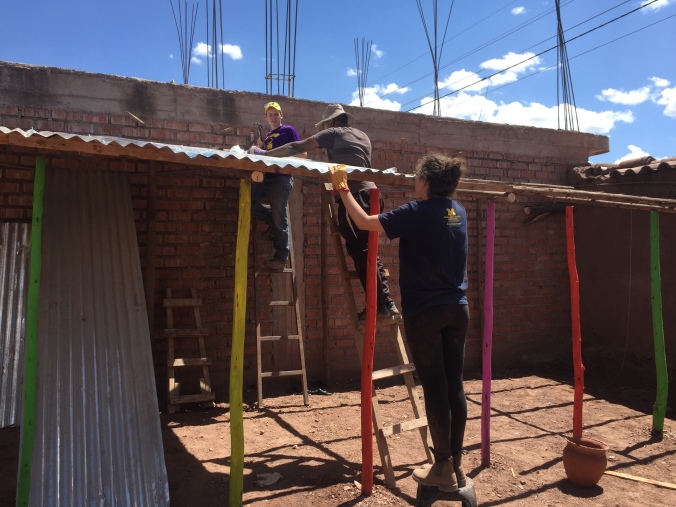
We partnered with another Maximo Nivel team for this project – the animal restoration project. They were very passionate about the cause and were working hard on the construction site each day despite the fact that they had intended to directly be working with dogs for the majority of their time in Cusco. They told us when they first started working on the site just a few weeks ago, it was just a barren mess of garbage and dirt. We’ve all worked on clearing out garbage and making the earth flat so eventually ceramic tiles could be overlaid.
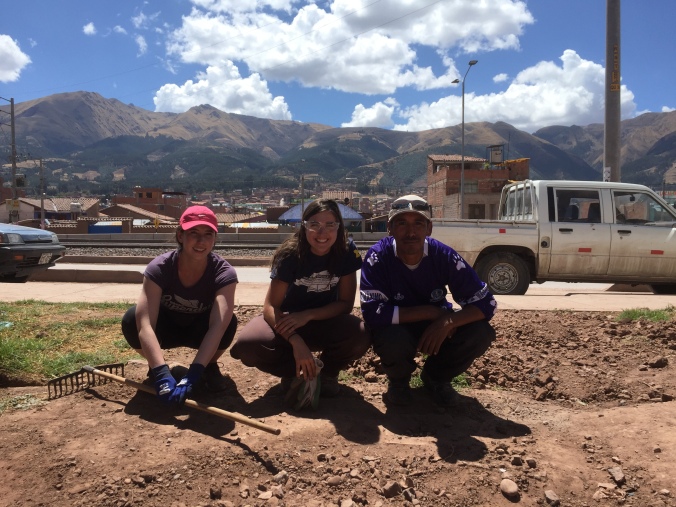
The final day was bittersweet as we completely finished one dog house section and nearly completed the foundation of another. It was sad to leave our construction leader Marco, who’s promised to share updated pictures of the site.


(Before & After)
FOOD:
We’ve seen quite a few “Chifa” restaurants during our stay here, and were confused if it was just “China” spelled incorrectly since the restaurants seemed to serve Chinese food. We learned this week from Daja, our volunteer coordinator, that “Chifa” actually came from the term “eat rice” in Chinese, which is 吃饭 (chī fàn), and “Chifa” is now used to describe all the Peruvian-Chinese restaurants here in Peru.
Upon learning this information, we decided to give Chifa a try at a restaurant near Plaza de Armas, and our food came in huge portions with wonton soup for only 13 soles, which is about $3.94. Below is a picture of one of the dishes we got with chaufa (炒饭/fried rice), chicken, and vegetables:

EXCURSIONS:
We ventured into a new neighborhood up the hill from the main plaza. San Blas is described as bohemian and artsy. After climbing many steps to get to the San Blas square, we went into the church there. The most notable piece in the church is the wooden pulpit, carved by the same artist who carved the pulpit in La Sagrada Familia in Cusco’s Plaza de Armas. As usual, we were quite hungry after walking around so we went into a place called The Meeting Room. They are a volunteer-based restaurant with all proceeds donated to various organizations. We had amazing milkshakes and waffles- we had to get in touch with our American roots at some point during the trip, we can only eat so many potatoes and plates of rice.
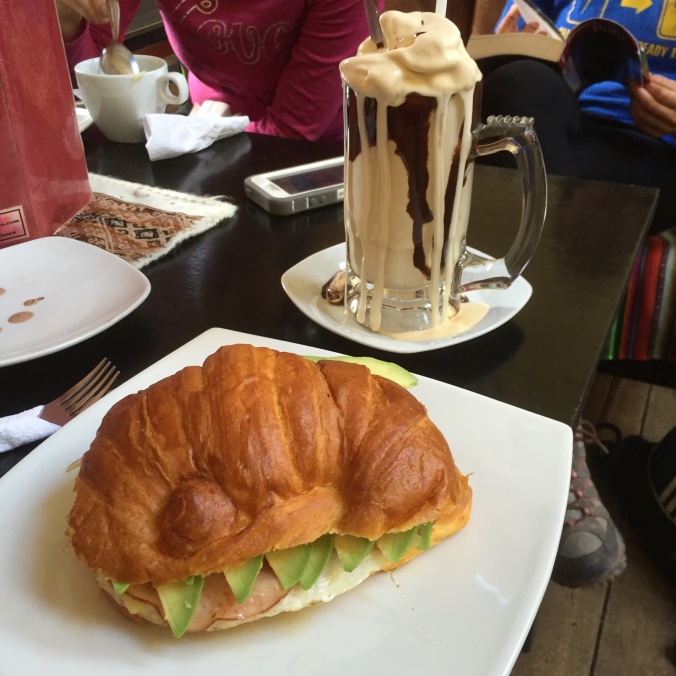
After San Blas, as the sun was setting, we went up to the Cusco Planetarium. Family run, we learned the history of constellations in the Southern Hemisphere and the Incan’s use of the sky to keep time. We viewed a few constellations outside in telescopes and we were even able to see Mars and Saturn (and the rings too!). It was interesting to see differences in constellations below the equator. The Big Dipper doesn’t exist, and instead of the North Star there is the Southern Cross. The last part of the night was viewing all the constellations in a domed planetarium.
The next day we visited Maras y Moray. Maras is where the Salineras (salt flats) are. There are 4,000 individual salt pools that are cared for by local families. Water from the mountains fill each salt pool and the sun evaporates the water leaving just salt. When the salt is 50 centimeters tall, they harvest it and send it to restaurants and grocery stores. The salt from Maras is considered to be gourmet, and they also had floral and medicinal salts.

Moray is the site where the Incans experimented agriculturally. The concentric circular terraces were used to grow a variety of things- potatoes, yuca, corn, etc. Most failed so they ended up using the terraces to grow coca plants (coca leaves are used to make tea that is supposed to help with altitude sickness).
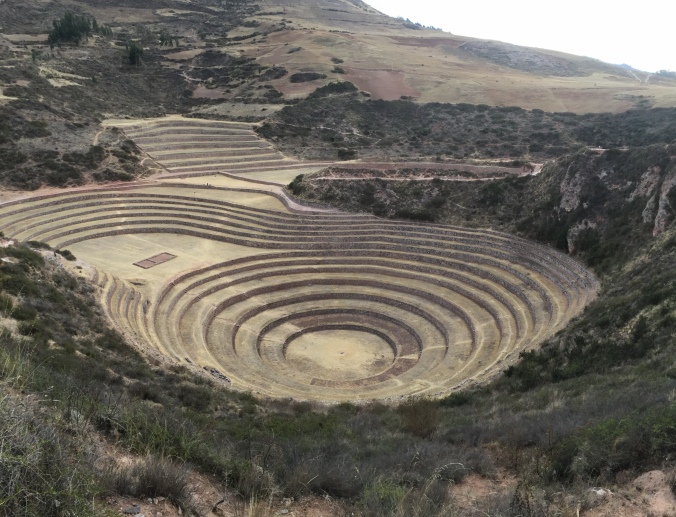
KEY LEARNINGS:
- Nailing is harder than it looks and sawing vertically is highly inefficient. Since we took on a new site this week, we were challenged with new construction tasks. We’ve found it very interesting to compare how tasks are completed here in Peru with how we would have done them in the US.
- Be careful what you eat – food poisoning is no joke (just ask Amy)
- On the back of that last learning, if you puke in a cab, tip the driver extra! A huge shout-out to our cab driver at Maras & Moray, we’re not sure if Amy would’ve made it without him.
- Some of our favorite phrases (and most commonly used) on this trip are as follows:
- “¿Tienes wifi?”
- “¿Cuánto cuesta?”
- “¿Qué es?”
- “¿Cómo se dice…?”
- “¿Porqué no vamos?”
- “¿Tienes jugo?”
- “Yo no sé…”
Despite the laundry list of questions that we asked every single day, we managed to survive this Peruvian trip with significantly improved Spanish skills! Those that already had some high school or college experience improved their conversational skills and others with zero previous Spanish experience are now leaving with an arsenal of vocabulary and a hunger to learn more.
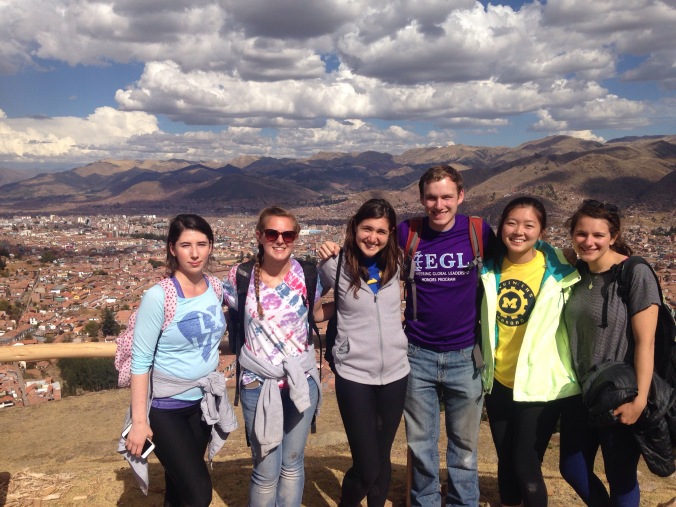
(Peru crew pictured at Sacsayhuaman featuring our new friend, Esti!)